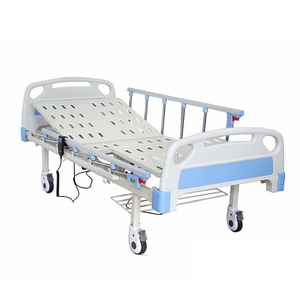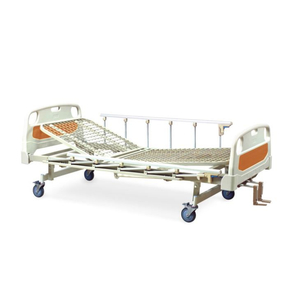When it comes to hospital beds, one of the most important aspects to consider is the size of the bed sheets. Choosing the right size sheets for a hospital bed is essential for ensuring patient comfort, safety, and hygiene. Hospital beds come in various sizes, and each size requires a specific sheet dimension to fit properly. In this research paper, we will explore the different sizes of hospital beds, the corresponding sheet sizes, and why it is crucial to select the right size for optimal functionality.
For factories, distributors, and channel partners in the healthcare industry, understanding the right sheet sizes for hospital beds is critical. Not only does it ensure that the products they supply meet the necessary standards, but it also helps in maintaining a high level of customer satisfaction. Whether you're dealing with manual or electric hospital beds, the right sheet size can make a significant difference in patient care.
Additionally, we will discuss how the different types of hospital beds, such as manual and electric beds, influence the choice of sheets. This paper will provide a comprehensive guide to help manufacturers and distributors make informed decisions when supplying sheets for hospital beds. To explore more about hospital beds, you can visit the Hospital Bed section on our website.
Understanding Hospital Bed Sizes
Hospital beds are designed to accommodate patients of different sizes and medical needs. The most common hospital bed sizes include standard, bariatric, and pediatric beds. Each of these beds requires sheets that fit snugly to ensure patient comfort and safety. Below is a breakdown of the most common hospital bed sizes:
Standard Hospital Beds
Standard hospital beds are typically 36 inches wide and 80 inches long. These beds are designed for average-sized adults and are the most commonly used in hospitals and healthcare facilities. The sheets for standard hospital beds should measure approximately 36 inches by 80 inches, with enough depth to accommodate the mattress thickness, which is usually around 6 to 7 inches.
For standard hospital beds, fitted sheets are preferred as they stay in place and provide a smooth surface for the patient. The sheets should also be made from durable, easy-to-clean materials to ensure hygiene and longevity. Manufacturers and distributors should ensure that they stock sheets that meet these specifications to cater to the needs of healthcare facilities.
Bariatric Hospital Beds
Bariatric hospital beds are designed for larger patients and typically measure 42 to 48 inches in width and 80 inches in length. These beds require larger sheets, usually around 42 to 48 inches wide and 80 inches long, with a deeper pocket to accommodate thicker mattresses. The sheets for bariatric beds should be made from strong, durable materials that can withstand frequent washing and provide comfort for the patient.
It is essential for suppliers to provide a range of sheet sizes to accommodate bariatric beds, as these beds are becoming more common in healthcare facilities. Providing the right size sheets for bariatric beds ensures that patients are comfortable and that the sheets stay securely in place, reducing the risk of pressure sores and other complications.
Pediatric Hospital Beds
Pediatric hospital beds are smaller than standard beds and are designed for children. These beds typically measure 28 inches wide and 52 inches long. The sheets for pediatric beds should be around 28 inches by 52 inches, with a snug fit to ensure the child's safety and comfort. Pediatric sheets should also be made from soft, hypoallergenic materials to protect the child's sensitive skin.
For manufacturers and distributors, offering a variety of pediatric sheet sizes is crucial, as healthcare facilities require specialized products for their younger patients. Pediatric sheets should also be easy to clean and durable, as they will need to withstand frequent washing and use.
Types of Hospital Bed Sheets
Hospital bed sheets come in various types, each designed to meet specific needs in healthcare settings. The most common types of hospital bed sheets include fitted sheets, flat sheets, and draw sheets. Each type serves a different purpose and is used in different situations. Below is an overview of the different types of hospital bed sheets:
Fitted Sheets
Fitted sheets are designed to fit snugly over the mattress, with elastic edges that keep the sheet in place. These sheets are ideal for hospital beds as they provide a smooth, wrinkle-free surface for the patient, reducing the risk of pressure sores. Fitted sheets are available in various sizes to fit different hospital bed dimensions, including standard, bariatric, and pediatric beds.
Fitted sheets are the most commonly used type of sheet in hospitals, as they stay in place even when the bed is adjusted. For suppliers, it is essential to offer fitted sheets in a range of sizes and materials to meet the needs of different healthcare facilities. To explore more about hospital bed accessories, you can visit the Hospital Bed Mattress section on our website.
Flat Sheets
Flat sheets are rectangular sheets that are placed over the fitted sheet. They are used to cover the patient and provide an additional layer of comfort. Flat sheets are typically larger than fitted sheets and can be tucked under the mattress to keep them in place. In hospitals, flat sheets are often used in combination with fitted sheets to provide extra warmth and comfort for the patient.
Flat sheets are available in various sizes to fit different hospital beds, and they should be made from soft, breathable materials to ensure patient comfort. For manufacturers and distributors, offering flat sheets in a range of sizes and materials is important to meet the diverse needs of healthcare facilities.
Draw Sheets
Draw sheets are smaller sheets that are placed across the middle of the bed, under the patient. They are used to help reposition the patient and reduce the risk of pressure sores. Draw sheets are typically made from strong, durable materials that can withstand frequent washing and use. In hospitals, draw sheets are an essential part of patient care, as they make it easier for caregivers to move and reposition patients.
For suppliers, offering draw sheets in a range of sizes and materials is important, as they are a crucial part of patient care in hospitals. Draw sheets should be made from durable, easy-to-clean materials to ensure hygiene and longevity.
Importance of Choosing the Right Sheet Size
Choosing the right sheet size for a hospital bed is essential for several reasons. First and foremost, the right sheet size ensures patient comfort. Sheets that are too small may not cover the mattress properly, leading to discomfort for the patient. On the other hand, sheets that are too large may bunch up, creating wrinkles that can cause pressure sores.
In addition to comfort, the right sheet size also ensures patient safety. Sheets that do not fit properly can come loose, increasing the risk of falls or injuries. In hospitals, where patients may be bedridden for extended periods, it is crucial to ensure that the sheets stay securely in place to prevent accidents.
Finally, choosing the right sheet size is important for maintaining hygiene. Sheets that do not fit properly may not cover the mattress completely, leaving areas exposed to dirt and bacteria. In healthcare settings, where hygiene is of the utmost importance, it is essential to ensure that the sheets fit properly to prevent the spread of infections.
In conclusion, selecting the right size sheets for hospital beds is essential for ensuring patient comfort, safety, and hygiene. Hospital beds come in various sizes, including standard, bariatric, and pediatric beds, and each size requires specific sheet dimensions. Manufacturers and distributors in the healthcare industry must ensure that they provide sheets in a range of sizes to meet the needs of different healthcare facilities.
By offering the right size sheets, suppliers can help healthcare facilities provide better care for their patients. Whether it's fitted sheets, flat sheets, or draw sheets, choosing the right size and material is crucial for ensuring patient comfort and safety. To learn more about hospital bed products, visit the Hospital Bed section on our website.





















